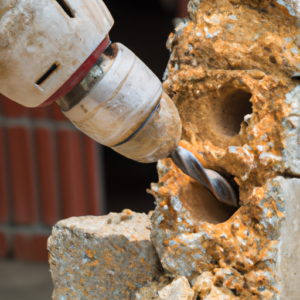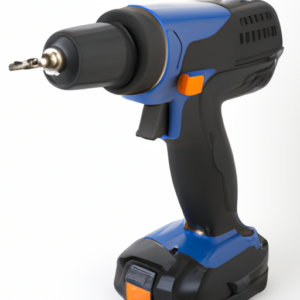Last Updated on January 29, 2023
If you’re looking to tackle some DIY home improvement projects, then chances are you’ll be wondering which tool is better: a hammer drill or an impact driver? Both of these power tools can help make your job easier, but it’s important to know the differences between them. A hammer drill vs impact driver comparison will show that each has its own advantages and disadvantages depending on what type of project you’re working on. In this blog post, we’ll discuss the difference between a hammer drill and an impact driver so that you can decide which one is best for your needs.
Table of Contents:
- Hammer Drill vs Impact Driver: What’s the Difference?
- When to Use a Hammer Drill
- When to Use an Impact Driver
- Conclusion
Hammer Drill vs Impact Driver: What’s the Difference?
Hammer drills and impact drivers are two of the most commonly used tools for home improvement projects. Both have their own unique advantages, so it’s important to understand which one is best suited for your needs.
What Is a Hammer Drill?
A hammer drill is a power tool that uses an electric motor to rotate a bit at high speed while also pounding or “hammering” it into the material being drilled. This combination of rotation and hammering action makes it ideal for drilling through hard materials like concrete, brick, stone, and mortar. It can also be used on softer materials such as wood and metal with the appropriate bits.
What Is an Impact Driver?
An impact driver is similar to a regular screwdriver but with more torque than traditional models due to its use of compressed air instead of electricity as its power source. This allows users to drive screws into even the toughest materials without having to exert too much force on them manually – making them perfect for tasks such as driving long screws into thick lumber or deck boards where extra strength is needed beyond what manual screwdrivers can provide.
Understanding the difference between a hammer drill and an impact driver is essential when it comes to home improvement projects. To get the most out of your toolbox, let’s take a look at when to use a hammer drill in our next heading.
When to Use a Hammer Drill

When it comes to home improvement projects, having the right tools for the job is essential. One tool that can be invaluable in certain situations is a hammer drill. Hammer drills are designed to quickly and efficiently drill into masonry or concrete surfaces with ease.
So when should you use a hammer drill? Here are some of the most common uses:
Drilling Into Masonry
A hammer drill can make quick work of drilling into a brick, stone, mortar, or any other type of masonry surface. It’s important to note that regular drills won’t be able to penetrate these materials without special bits and lots of time and effort. With a hammer drill, however, you can easily bore through them in no time at all.
Installing Anchors
If you need to install anchors into masonry walls (for example, if you want to hang something heavy on your wall), then using a hammer drill will make this process much easier than trying to do it by hand. The vibrations from the tool will help break up any material around the anchor as well as help drive it deeper into place for maximum security.
Removing Tiles
Removing tiles from walls or floors can be difficult if done manually, but with a hammer drill, it becomes much simpler – just set your bit depth correctly so that only enough tile is removed for easy removal afterwards. This method also works great for removing grout too – take care not to go too deep; otherwise, you could damage underlying structures like pipes or wiring behind the wall/flooring surface.
Creating Holes for Pipes or Wiring
If you need to create holes in order for pipes or wiring installation, then again, using a hammer drill makes this task much easier than doing it manually. Simply adjust your bit depth accordingly and let the vibration do its work. Just remember not to overdo it, as this could cause damage further down inside whatever structure you’re working on, such as an interior wall.
No matter what type of job you’re doing, understanding when to use a hammer drill and an impact driver is essential for getting the best results. Now let’s look at when to use an impact driver.
When to Use an Impact Driver

If you’re looking for a tool to help with your home improvement projects, an impact driver is one of the most useful tools you can have. Impact drivers are designed to drive screws into wood or metal quickly and efficiently. They use a combination of torque and rotational force to get the job done, making them ideal for tasks that require lots of power.
What Sets It Apart?
An impact driver differs from other types of drills in several ways. First, it has a much higher torque than regular drills, which makes it better suited for driving screws into harder materials like metal or hardwood. Additionally, its design allows it to generate more rotational force when compared to traditional drills; this helps make sure that even long screws are driven in securely without stripping out the material they’re being driven into. Finally, because an impact driver is powered by compressed air instead of electricity or batteries, there’s no need to worry about running out of power mid-project.
When Should You Use An Impact Driver?
Impact drivers are best used when working on projects where speed and efficiency are of the utmost importance, such as installing decking boards or building furniture. Their high torque means they can drive even large screws quickly and easily without having to pause every few seconds due to lack of power. Additionally, if you find yourself needing extra leverage while drilling holes in tough materials like concrete or brick walls, then an impact driver will be able to handle those jobs too.
Conclusion
When it comes to choosing between a hammer drill and an impact driver, the decision ultimately depends on your needs. If you’re looking for a tool that can handle tough drilling jobs, then a hammer drill is the way to go. On the other hand, if you need something more lightweight and versatile for everyday tasks, then an impact driver is probably your best bet. No matter which one you choose, make sure to do your research and pick the right tool for the job – after all, there’s no point in investing in a hammer drill vs impact driver if it won’t meet your requirements.
Paul is the type of person who never met a problem he couldn’t fix. He can always be found tinkering with something in his house, even if it isn’t broken! His tips and tricks are often shared on our site. He’s the one you call when something breaks because he has been known to improvise fixes for everything from leaky faucets to malfunctioning dryers.

